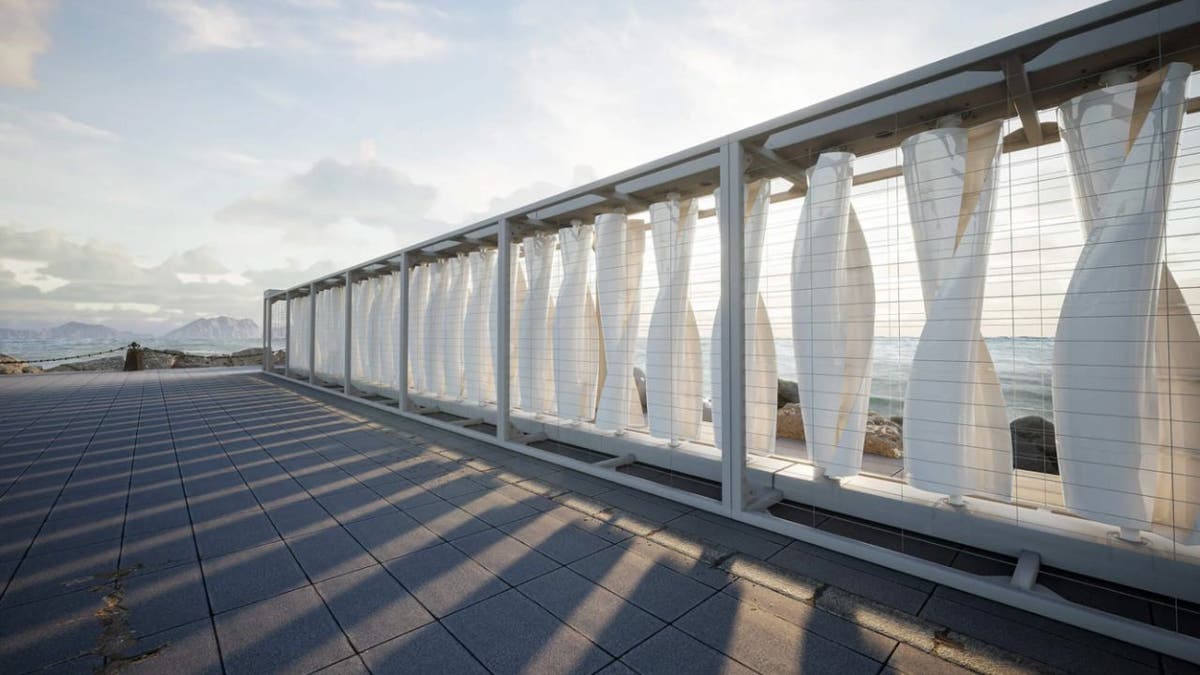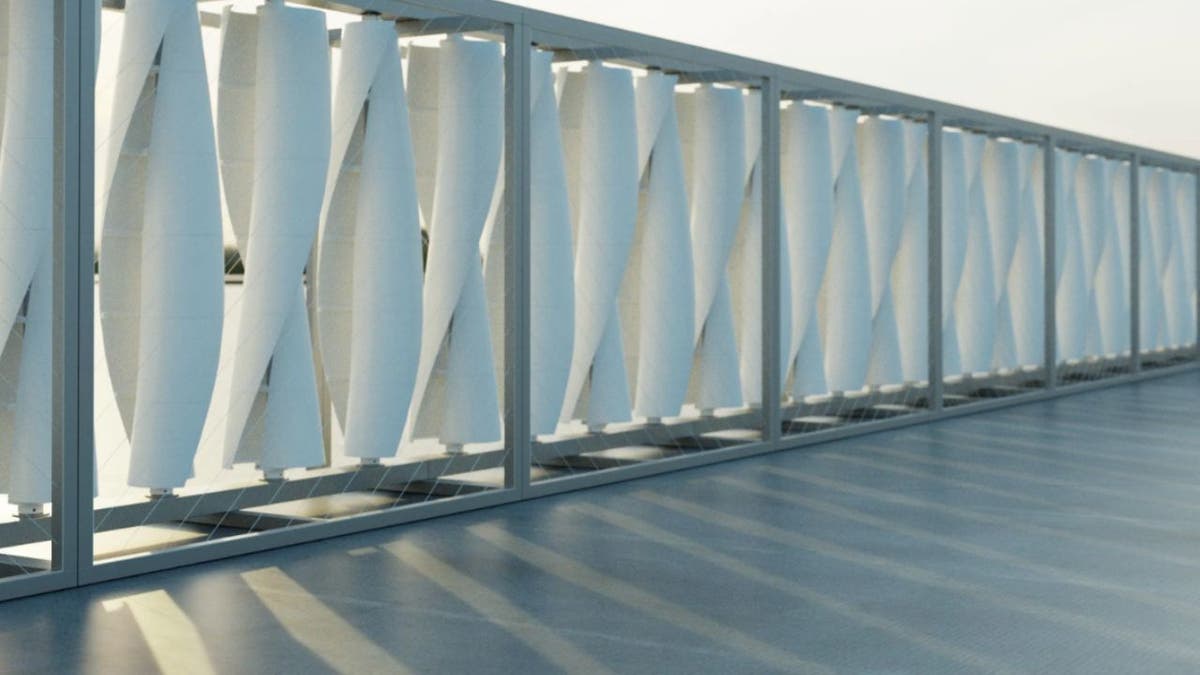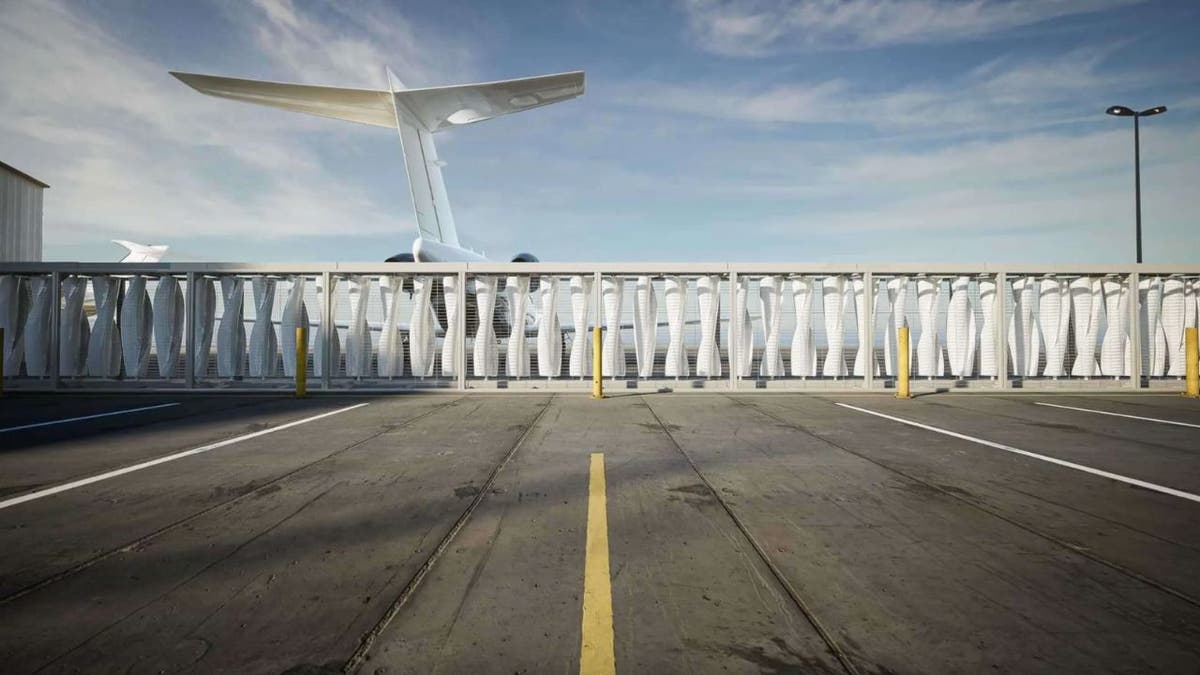A designer's wild 'wind turbine wall' idea is actually becoming reality
Revolutionary journey from concept to construction of wind turbine wall
Wild wind turbine wall idea is actually becoming reality
The product is called Airiva from designer Joe Doucet.
You may have seen renderings of an eye-catching wall covered in vertical wind turbines making the rounds online. That bold concept is finally spinning into reality with a product called Airiva from designer Joe Doucet.
The initial vision was ambitious: a mesmerizing array of 25 vertical-axis turbines each connected to a generator for a combined peak output of 10 kilowatts.
While that's an attractive figure on paper, the intermittent nature of wind means actual daily energy production could be significantly lower.
GET SECURITY ALERTS, EXPERT TIPS - SIGN UP FOR KURT’S NEWSLETTER - THE CYBERGUY REPORT HERE

Wind turbine wall (Airiva)
Years of refinement and testing
But Doucet didn't just run with that initial concept. Over the past few years, his team has tweaked and tested 16 different blade configurations before settling on a helical design. They've refined Airiva into a modular system made up of sizable turbine units.
Each unit houses eight turbines and is expected to produce around 2,200 kWh annually. Not a massive amount on its own, but it's enough to put a dent in domestic energy bills. In fact, an average U.S. home would need around five units to meet all its electricity needs, though that's quite a large footprint.
BEST AMAZON PRIME DAY 2024 EARLY DEALS

Wind turbine wall (Airiva)
UNDERWATER KITE IS ABLE TO HARNESS THE OCEAN'S POWER FOR SUSTAINABLE ENERGY
Targeting urban infrastructure
While residential is a potential market, Airiva seems aimed more at urban infrastructure projects. Multiple units could line highways, span bridges or be installed at company campuses, airports, harbors and transport hubs.
"Airiva integrates within the architecture and infrastructure of our urban and suburban landscapes to bring clean energy closer to where we live and work," Doucet said on the company's website.

Wind turbine wall (Airiva)
BEST SMART BLINDS TO CONTROL AND AUTOMATE YOUR HOME'S FUNCTIONALITY AND ENERGY EFFICIENCY
Sustainable, smart and competitive
Beyond its unique design, Airiva touts five impressive eco-friendly and technological credentials:
1. At least 80% recycled materials in manufacturing
2. Modular and scalable for diverse installation needs
3. Compatible with other distributed energy systems
4. Remote monitoring for smart control
5. Competitive energy costs compared to similar solutions
The company is still prototyping but plans customer pilots in late 2024 before opening orders in 2025. The upcoming tests will reveal if Airiva's performance and pricing can live up to its bold promises.
HOW TO REMOVE YOUR PRIVATE DATA FROM THE INTERNET

Wind turbine wall (Airiva)
THE WORLD'S FIRST ELECTRIC FLYING CRAFT IS SET FOR LIFTOFF
Powering the future: Sustainable tech solutions for today’s home
Innovations similar to Joe Doucet’s Airiva are making waves in the realm of residential energy efficiency. Here are some technologies that are also being used to reduce domestic energy bills:
1. Solar panels: Rooftop solar panels are a popular choice for homeowners looking to harness renewable energy. They can significantly reduce electricity bills and even generate excess power that can be sold back to the grid.
2. Smart home devices: Smart thermostats, lighting systems and appliances can optimize energy use, leading to lower energy consumption and costs.
3. Ultra-efficient heat pumps: Next-generation heat pumps can warm and cool homes more efficiently than traditional systems, reducing primary energy consumption by up to 30%.
4. Energy-efficient windows: Advanced window controls and materials can minimize heat loss during winter and reduce heat gain during summer, improving overall energy efficiency.
GET FOX BUSINESS ON THE GO BY CLICKING HERE
5. Reflective roofing materials: These materials can reflect more sunlight and absorb less heat, leading to lower cooling costs.
6. LED lighting: LED bulbs use up to 80% less energy than incandescent bulbs and last up to 25 times longer. They also produce less heat, which can help keep your home cooler in the summer. By replacing the most-used bulbs in your home with LEDs, you can save about $75 per year.
Also, consider using smart light bulbs, which are LED light bulbs that connect to the internet through Wi-Fi or a hub. When connected to the internet, you can control when, how long, how often and how brightly (and even what color) your bulb shines from the comfort of your cellphone, tablet, smartwatch or voice assistant. Smart light bulbs use at least 75% less energy and last 25 times longer than incandescent bulbs. Be sure to check out my top smart bulb picks here.
7. Geothermal systems: Geothermal heat pumps use the stable temperature of the ground to provide heating, cooling and hot water at high efficiencies.
8. Wind turbines: Residential wind turbines can be installed on properties to generate electricity, though they require a suitable location with enough wind.
9. Hydropower systems: Microhydropower systems can be a viable option for homes near flowing water, converting the energy of flowing water into electricity.
These technologies, along with Airiva’s wind turbines, represent a growing trend towards greener, more sustainable living. They not only help in reducing energy bills but also contribute to a lower carbon footprint, aligning with global efforts to combat climate change.
Unexpected ways to lower your energy bills
Be sure to check out some unexpected ways to lower your energy bills that I've discovered. You'll learn about new and traditional products that can help create a cooling strategy that gives you more control and saves you money. To see my list of recommendations, click here.
Pro tip: Best gear to keep you cool during a hot summer
Beat the heat this summer with some great fans, coolers and sleeping solutions to help you stay chill this summer. You can check out my picks here.
SUBSCRIBE TO KURT’S YOUTUBE CHANNEL FOR QUICK VIDEO TIPS ON HOW TO WORK ALL OF YOUR TECH DEVICES
Kurt's key takeaways
As we look towards the future, it’s clear that a combination of these technologies will be necessary to meet our energy needs in a sustainable way. From the integration of wind turbines into urban landscapes, as seen with Airiva, to the adoption of smart home technologies and the continued improvement of solar power systems, each innovation brings us closer to a more energy-efficient world. The walls that once stood as mere structures are increasingly becoming canvases for sustainable energy production, transforming the way we live and work.
CLICK HERE TO GET THE FOX NEWS APP
What are your thoughts on the future of domestic energy production and the role of technologies like Airiva in reducing our carbon footprint? Let us know by writing us at Cyberguy.com/Contact.
For more of my tech tips and security alerts, subscribe to my free CyberGuy Report Newsletter by heading to Cyberguy.com/Newsletter.
Ask Kurt a question or let us know what stories you'd like us to cover.
Follow Kurt on his social channels:
Answers to the most asked CyberGuy questions:
- What is the best way to protect your Mac, Windows, iPhone and Android devices from getting hacked?
- What is the best way to stay private, secure and anonymous while browsing the web?
- How can I get rid of robocalls with apps and data-removal services?
- How do I remove my private data from the internet?
Copyright 2024 CyberGuy.com. All rights reserved.
Kurt "CyberGuy" Knutsson is an award-winning tech journalist who has a deep love of technology, gear and gadgets that make life better with his contributions for Fox News & FOX Business beginning mornings on "FOX & Friends." Got a tech question? Get Kurt’s free CyberGuy Newsletter, share your voice, a story idea or comment at CyberGuy.com.





















